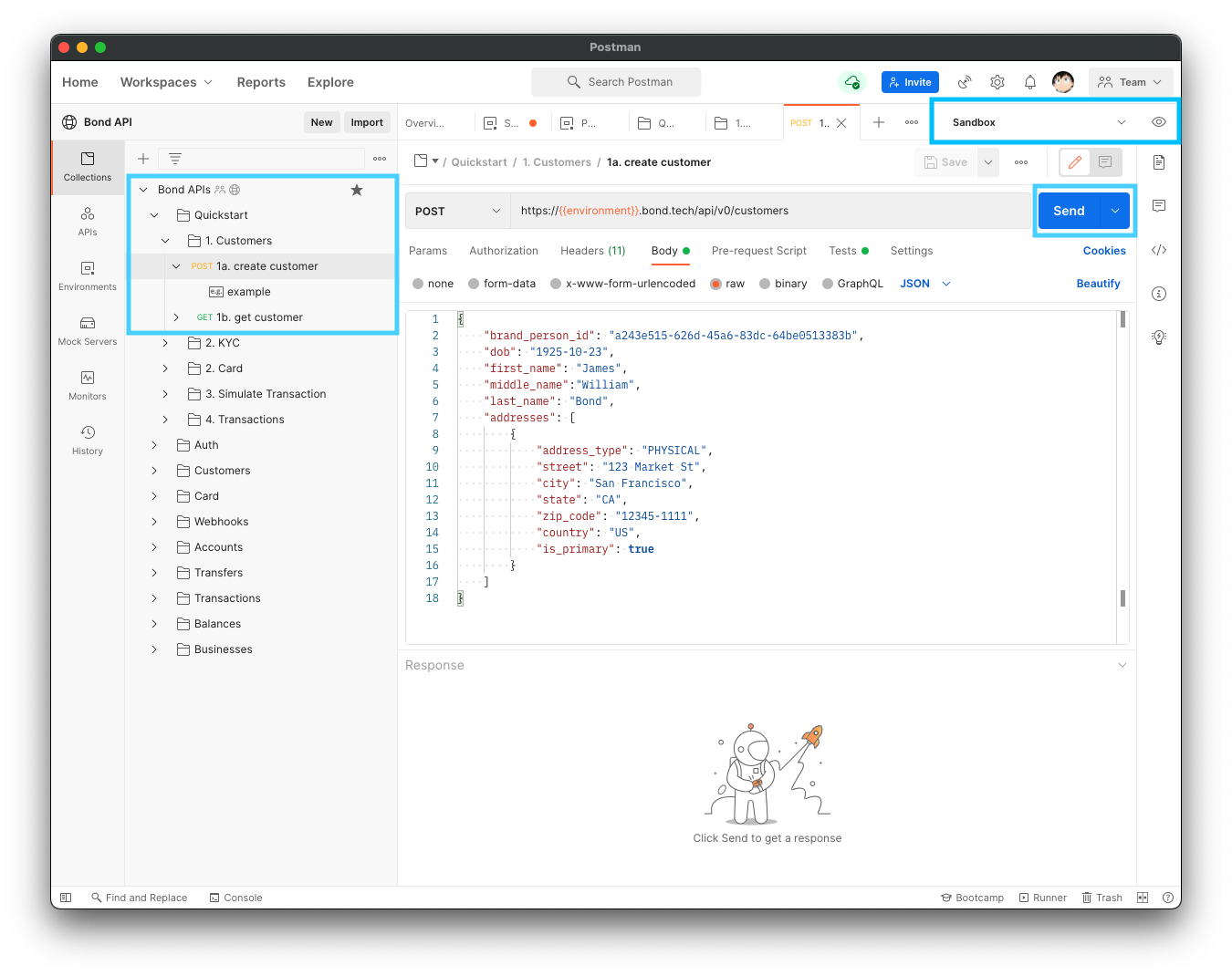How can you use our Postman collection.
Installing Postman
Postman is available on a variety of platforms. Visit Postman to see if your platform is supported.
To install Postman:
- Go to Postman downloads.
- Download the required version.
- After your download is complete, run the downloaded file to install Postman.
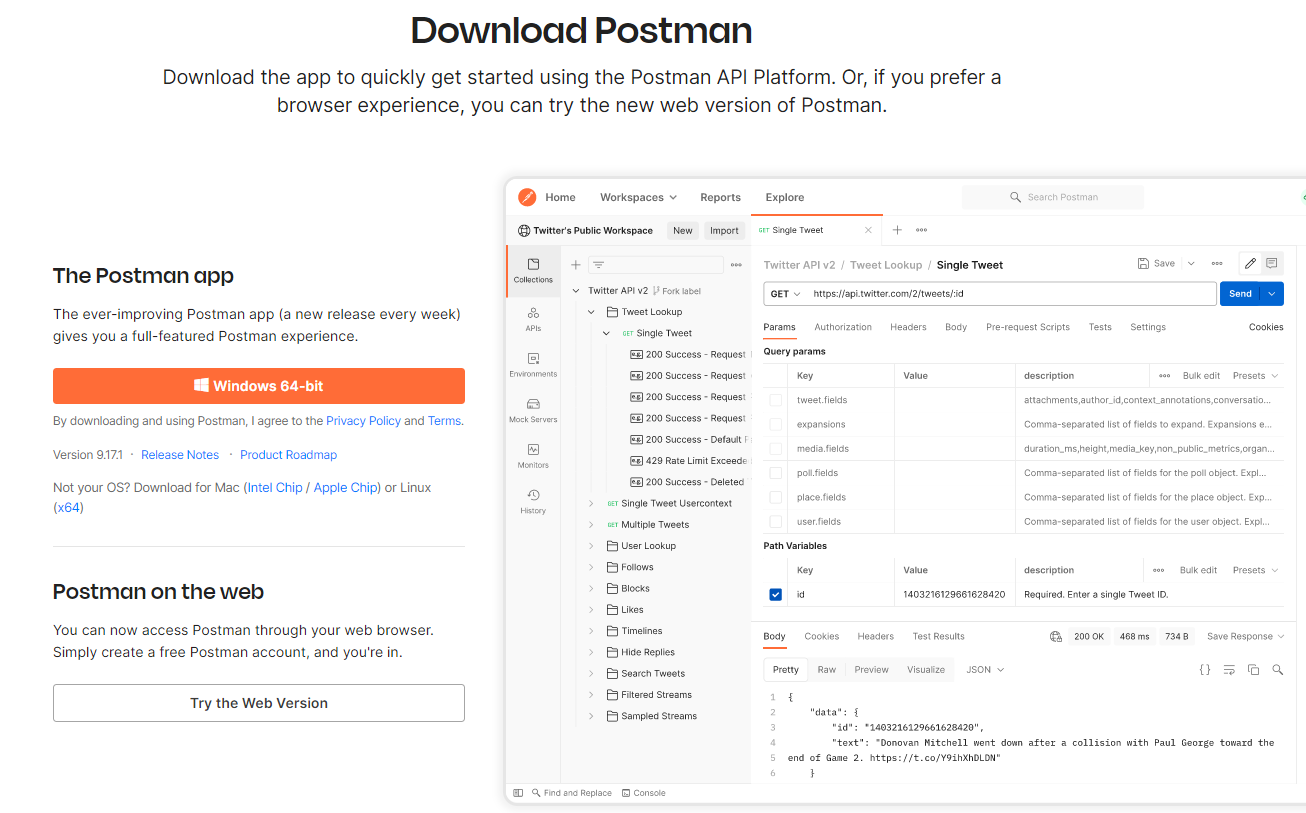
Import the Bond collection
To import a collection, click on any of the ▶ Run in Postman buttons in our guides and you'll be prompted to open your local Postman application to import.
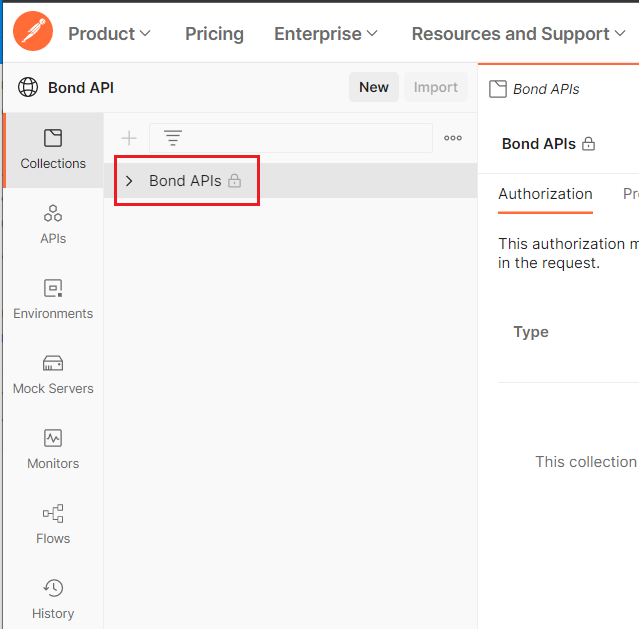
For further information, see the Postman documentation on importing data.
Configure your Postman environment
Fork an environment
You can fork a copy of our Sandbox environment in the Public Workspace. You can then update it with your identity and authorization tokens in your private or team workspace.
Note
If you are using Postman with our Production environment, enter your Production credentials you received from Bond instead of your Sandbox credentials.
After you've forked your copy, you can enter your API credentials in your workspace.
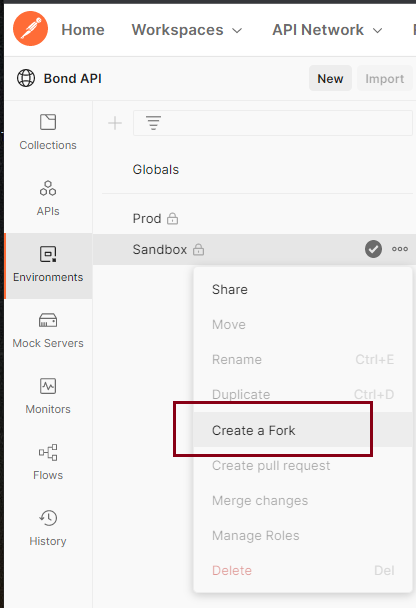
Set API keys
You will need to set your auth keys as variables in the environment you forked. You can set the variables in the headers in the environment tab within the postman collection
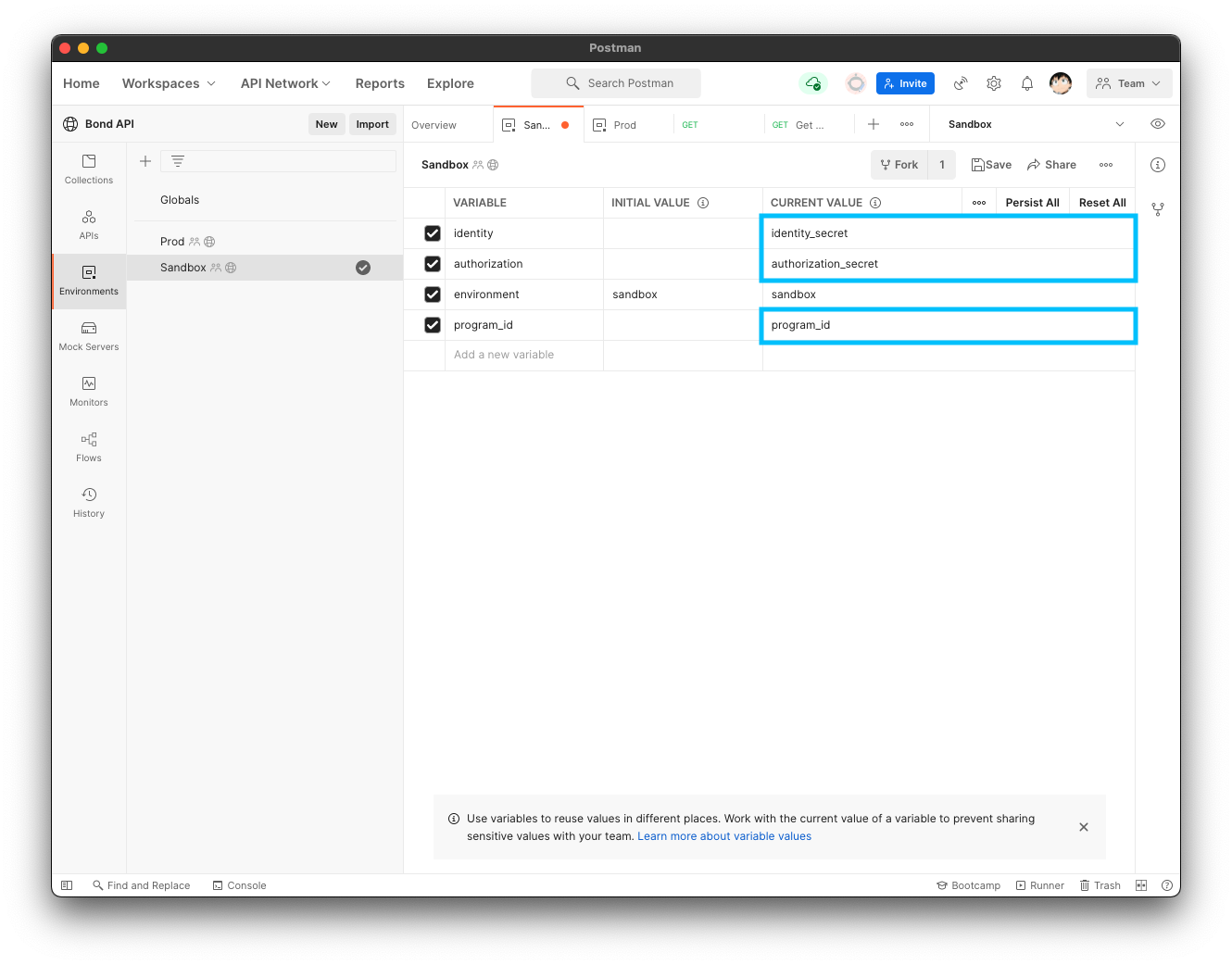
| Variable | Description |
|---|---|
identity | An authentication identifier used by Bond API authentication service. Primarily this is used to identify which organization a request originates from. Found in Developers > API keys in Bond Portal. |
authorization | The API key associated to the identity. |
program_id | Test program ID found in the Developers tab in Bond Portal. |
Fork a collection
- Click on the Collections tab on the left.
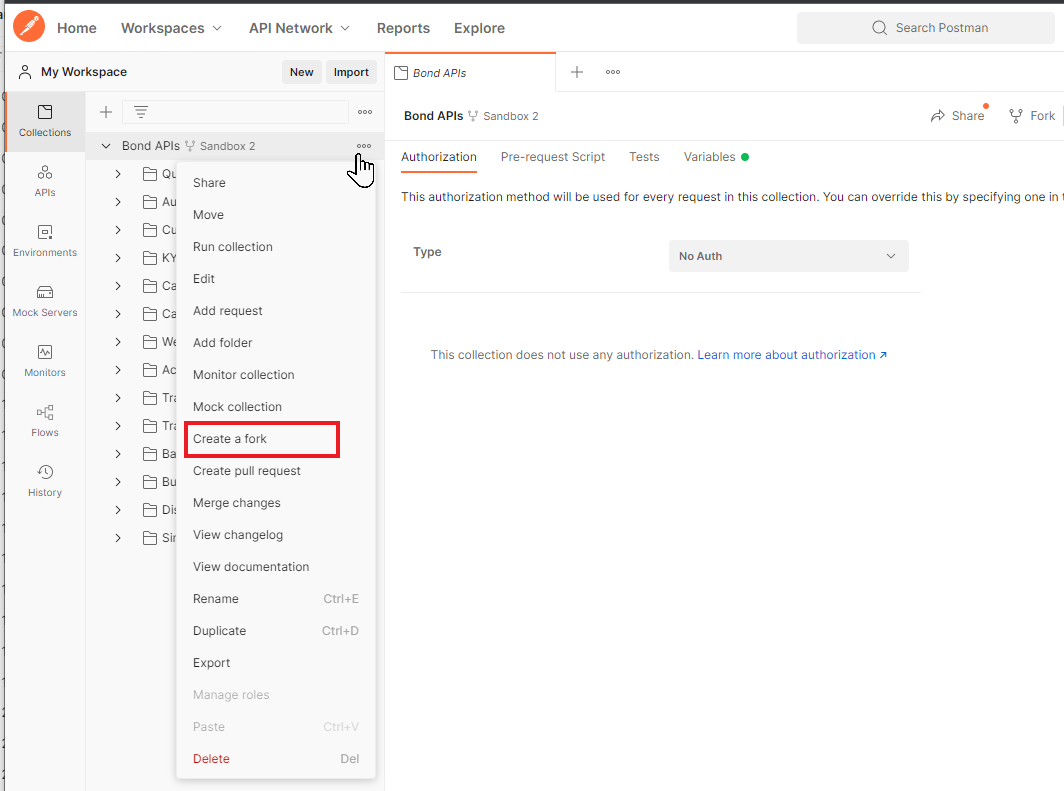
- Click on the ellipsis next to the collection you want to fork.
- Click Create a fork.
- In the popup window, enter a label (name) for the fork and the location where you would like to save it.
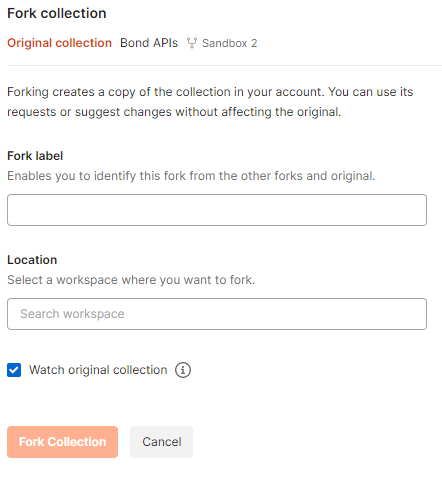
- Click Fork collection.
Execute requests
- Select the required environment.
- Select a request to execute.
- If required, you may need to enter/update some of the request bodies.
- Click Send.
When necessary, our collections define variables that are needed for downstream requests.
